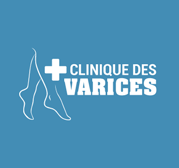VARICOSE VEIN FAQs
Veins are vessels which are designed to carry de-oxygenated blood back to the heart from the tissues of the body. However, varicose veins are abnormally dilated veins that cannot perform their function.
Varicose veins are larger veins that bulge above the skin surface. They are commonly found in association with larger and deeper vein problems. If there is a deeper vein problem it can be detected at an initial examination.
Varicose veins occur in both men and women. A definitive cause is not known, however a strong family history suggests that some people inherit veins that are more likely to deteriorate. In women, oestrogen may play a role as the onset of puberty, pregnancy and taking oral contraceptives can give rise to vein abnormalities. In pregnancy, the enlarged uterus can restrict blood flow from the legs and promote the development of varicose veins. Aging is also a major contributor to gradual progressive valve weakness. Spider veins and varicose veins are also associated with obesity. Occupations involving prolonged standing tend to increase the likelihood of developing symptomatic veins.
In venous disease, the underlying problem appears to be damage to the valves.
Gravity dictates that blood is pulled downwards. To counteract this, the body has developed a way to prevent blood from remaining in the lower limbs, through circulation and the presence of valves within the leg veins which open in only one direction: upwards.
These valves allow the blood to pass in only one direction and stop the blood going all the way down. The contraction of the calf muscle sends the blood even higher until it eventually reaches the heart.
Varicose veins occur when the valves stop working and cannot stop the blood from rushing back down. The blood in these veins pools in the legs which leads to higher pressure in the branches near the skin. These branches bulge and varicose veins occur.
We can’t say for sure, but there are measures which can be taken to potentially help the issue:
Wearing specialised venous support stockings may prevent some dilated blood vessels from developing in some people, Maintaining a healthy weight, Regular exercise, Maintaining a healthy diet,
VARICOSE VEIN TREATMENT FAQs
Although dilated blood vessels do carry some blood, they are not very efficient and most often are not necessary to the circulatory system. The body already has an established alternative route for the blood to travel back more efficiently to the heart. Varicose veins can therefore be treated without damaging the circulation, often improving venous circulation.
Almost painless Performed on an outpatient basis Under local anaesthesia With a simple puncture Absence of skin incisions, limiting scarring Very effective Result in little or no postoperative discomfort The patient can resume his normal activities very quickly (without interruption of work)
Varicose veins serve no useful function to the body’s circulation. They do not return blood to the heart and our body has already established alternative pathways to bypass the abnormal varicose veins. When varicose veins are closed down, the circulatory system improves, as do many of the symptoms.
The veins that have been treated effectively will not return. With UGS, varicose veins can be effectively treated without the need for surgery, but for some people varicose veins are a reoccurring problem because the underlying causes cannot be changed e.g. heredity and aging. As this is largely a genetic condition, presently normal veins may develop incompetence and enlarge over time, leading to secondary varicose veins.
At present, there is no medication or any other method to repair defective venous valves causing varicose veins. The best solution remains the neutralization of the diseased vein, either by removing it (surgery: stripping and / or phlebectomy) or by destroying it with a chemical method (foam sclerotherapy), or by thermal ablation (laser). Internationally, thermal ablation has become the standard treatment of veins and not surgery.
This treatment is performed on an outpatient basis under local anaesthesia. It is not necessary to be fasting and to interrupt your regular medication. The entire procedure is guided by ultrasound and performed with sterile equipment. A simple puncture of the vein at the lower leg level to introduce the optical fibre into the vein is done. Local anaesthesia is then carried out (tumescent). It anesthetizes the tissue around the vein and protects the surrounding tissue against damage during the procedure. The vein can then be treated painlessly over the entire desired length. You can walk immediately after the treatment. Treatment allows an immediate return to normal activity.
AFTER TREATMENT FAQs
Resuming strenuous activity depends on your treatment. After sclerotherapy for spider veins, you can begin exercising after 24 hours. However, with microphlebectomy or laser ablation, we recommend that you wait two weeks to allow for best healing, and to reduce the chances of the vein reopening.
After Varicose Vein Treatment you will be fitted with thigh high/open toes class two compression stockings. You will need to wear these stockings for between 5 to 14 days. Wearing these stockings further reduces the already low risk of deep vein thrombosis (DVT). The wearing of the compression stockings is an important part of your treatment. Compression following your vein treatment assists in the healing process and will reduce the degree of bruising, inflammation, swelling and trapped blood. Any questions you have regarding the wearing of stockings will be fully explained when you come in for treatment.
